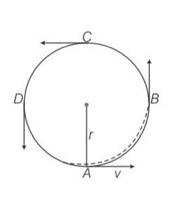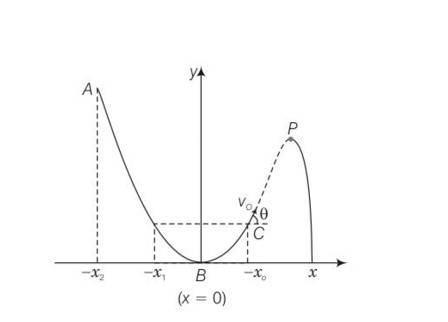Physics NCERT Exemplar Solutions Class 11th Chapter Four
Get insights from 45 questions on Physics NCERT Exemplar Solutions Class 11th Chapter Four, answered by students, alumni, and experts. You may also ask and answer any question you like about Physics NCERT Exemplar Solutions Class 11th Chapter Four
Follow Ask QuestionQuestions
Discussions
Active Users
Followers
New answer posted
3 months agoContributor-Level 9
Given
E1 = E2 = E - (i)
Potential drop across second cell is
According to question VA – VB = 0
E2 lr2 = 0
New question posted
3 months agoNew answer posted
5 months agoContributor-Level 10
Linear motion is one-dimensional motion. It refers to motion in a single direction or in a straight line. In linear motion, the object either moves forward or backward along one axis, i.e. x-axis. For example - a ball dropped from a height vertically downward or a car moving straight on a road. Motion in a Plane refers to an object moving in two dimensions, usually along x and y axes. For example, a football kicked at an angle.
New answer posted
5 months agoContributor-Level 10
The angle of projection is used to find the trajectory, horizontal range of a projectile, maximum height, and time of flight. For example, the maximum range on level ground is given by the 45-degree angle.
New answer posted
5 months agoContributor-Level 10
The vectors like velocity, displacement, and acceleration act along different directions in the two-dimensional motion. Resolving the vectors into the vertical and horizontal components allows the application of one-dimensional kinematic equations in each direction separately. It helps solve the problems more accurately and also simplifies the analysis.
New answer posted
5 months agoContributor-Level 10
This is a Multiple Choice Questions as classified in NCERT Exemplar
Explanation- |A+B|=|A-B|
=
4|A|B|cos =0
|A|2+|B|2cos =0
A=0 or B=0 so . so A perpendicular B
New answer posted
5 months agoContributor-Level 10
This is a Multiple Choice Questions as classified in NCERT Exemplar
Answer- a, b, c
Explanation- (i) speed will constant throughout
(ii) velocity will be tangential in the direction of motion
(iii) centripetal acceleration will be a= v2/r, will always be towards centre of the circular path.
(iv) angular momentum is constant in magnitude and direction out of the plane perpendicularly as well.

New answer posted
5 months agoContributor-Level 10
This is a Multiple Choice Questions as classified in NCERT Exemplar
Answer- a, c
Explanation – as we know average acceleration is aav=
But when acceleration is not uniform Vav is not equal to v1+v2/2
So we can write
= v2-v1 (t2-t1)
New answer posted
5 months agoContributor-Level 10
This is a Multiple Choice Questions as classified in NCERT Exemplar
Answer- c
Explanation– as the given track y=x2 is a frictionless track thus total energy will be same throughout the journey.
Hence total energy at A = total energy at P . at B the particle is having only Ke but at P some KE is converted to P
Hence (KE)B = (KE)P
Total energy at A = PE= total energy at B = KE= total energy at P
= PE+KE
Potential energy at A is converted to KE and PE at P hence
(PE)P< (PE)A
Hence (height)P= (height)A
As height of p < height of A
Hence path length AB > path length BP
New answer posted
5 months agoContributor-Level 10
This is a Multiple Choice Questions as classified in NCERT Exemplar
Answer- a,b,c
Explanation – H=
H1=Vo2sin2 1/2g , H2=Vo2sin2 2/2g
H1>H2
Vo2sin2 1/2g= Vo2sin2 2/2g
Sin2 1>sin2 2
Sin2 1 – sin2 2>0
(Sin 1 – sin 2)( Sin 1 + sin 2)>0
Sin 1>sin 2 or 1 >2
T=
T1= , T2=
T1> T2
R=
Sin 1>sin 2
Sin2 1> sin2 2
R1>R2
Total energy for the first particle
U1=K.E+P.E=1/2m1
U2= K.E+P.E= 1/2m2
Total energy for the second particle
So m1= m2 then U1=U2
So m1>m2 then U1>U2
So m1
Taking an Exam? Selecting a College?
Get authentic answers from experts, students and alumni that you won't find anywhere else
Sign Up on ShikshaOn Shiksha, get access to
- 65k Colleges
- 1.2k Exams
- 679k Reviews
- 1800k Answers

